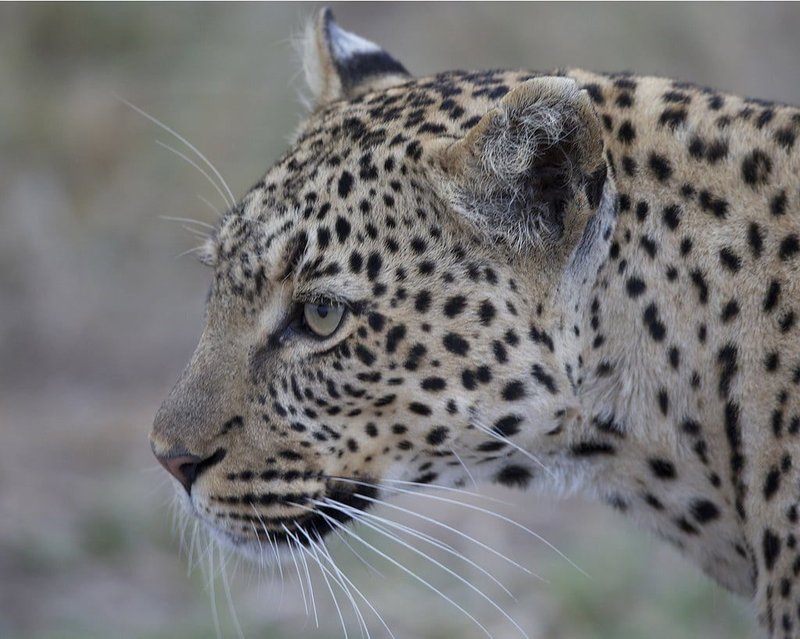
Here’s the thing: leopards tend to avoid humans when possible. They’re not looking for trouble, and for the most part, they want to stay out of our way. However, there are situations where encounters could turn dangerous. In this article, we’ll explore the behavior of African leopards, their interactions with humans, and what you need to know if you ever find yourself in the wild, where these beautiful yet powerful animals live.
Understanding the African Leopard
Let’s start with some basics. The African leopard (*Panthera pardus*) is a solitary and elusive big cat, found across various habitats in Africa—from savannas and grasslands to forests. They’re incredibly adaptable, which explains their broad range. These leopards are often seen lounging in trees, where they rest and keep a watchful eye on their surroundings. They can weigh between 60 to 200 pounds, with males usually larger than females.
You might picture a leopard as a fierce hunter, and you’d be right. They use their superb camouflage to stalk prey, which usually includes small to medium-sized animals like antelope, monkeys, and birds. Their powerful limbs allow them to leap great distances, making them formidable hunters. Now, while it’s easy to admire their beauty and skill, understanding their behavior is crucial in knowing how they might pose a danger to humans.
Are African Leopards Aggressive?
Most of the time, African leopards are not aggressive toward humans. They are naturally shy and prefer to avoid contact. If they sense a human nearby, their instinct is to flee. Still, there are exceptions that could lead to dangerous encounters. For instance, if a leopard feels threatened or is protecting its cubs, it might respond aggressively.
Imagine walking through a lush, dense area with a sudden rustle in the bushes. If a leopard perceives you as a competitor or threat to its territory or young, it might decide to stand its ground. Although these situations are rare, they can definitely be dangerous. Understanding their nature helps in avoiding any potential conflicts.
When Do Encounters Happen?
Encounters with African leopards mainly occur when humans venture into their habitats. This could happen during activities like hiking, camping, or safari tours. Here are a few scenarios where humans might come too close for comfort:
- Hiking or walking near leopard territory, especially during their active hours (usually dusk and dawn).
- Camping in areas where leopards have been spotted, especially if food is left out.
- Being near water holes or game trails where leopards are likely to hunt.
The key takeaway here is that awareness of your surroundings is vital. If you’re in an area known for leopard sightings, staying alert can make a big difference in preventing encounters.
Precautionary Measures in Leopard Territory
If you ever find yourself in the presence of an African leopard, there are several precautions you can take to ensure your safety:
- Stay in groups: Leopards are less likely to approach a larger group of people. There’s safety in numbers.
- Make noise: Speaking loudly or clapping can alert wildlife to your presence, encouraging them to move away.
- Store food properly: If camping, keep food secured and away from your sleeping area to avoid attracting leopards.
Ultimately, the best way to enjoy the wonders of nature while minimizing risk is to respect wildlife and their habitats. Understanding their behavior and practicing caution can allow you to observe these incredible animals safely.
Real-Life Encounters and Stories
There have been documented encounters where humans faced danger from African leopards. In some cases, these incidents stemmed from people wandering too close to the animals’ territory. One story involves a group of tourists in a remote safari camp who attracted a leopard by accidentally leaving food out overnight. The leopard approached, leading to a tense situation for the guests. Thankfully, they managed to alert their guide, who helped disperse the animal safely.
These stories highlight the importance of being aware of one’s surroundings in the wild. They also serve as reminders that while leopards generally avoid confrontations, responsible behavior can prevent dangerous encounters.
So, can the African leopard be dangerous to humans? In short, yes, but only under certain circumstances. By understanding their behaviors and respecting their space, we can coexist with these incredible creatures.
The African leopard is an awe-inspiring animal, and witnessing one in the wild can be a breathtaking experience. Just remember, they’re not out to get you; they just want to live their lives peacefully. With a little caution and respect for their environment, you can safely enjoy the beauty of nature and the majestic leopard. Always be aware, stay safe, and appreciate these stunning cats from a distance.

